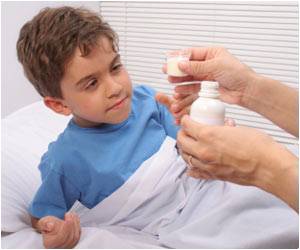Hospitalized premature infants are exposed to unsafe levels of a chemical found in numerous medical products used to treat them.

The chemical, di(2-ethylhexyl)phthalate (DEHP), is used to increase flexibility of many plastic devices. These products, made from polyvinyl chloride (PVC), include most intravenous tubing, catheters, endotracheal tubes, and fluid and blood product bags.
DEHP doesn't bind chemically to PVC, and is able to leach into fluids and body tissues in contact with it. New Johns Hopkins Bloomberg School of Public Health research suggests that critically ill preterm infants may be exposed to DEHP at levels approximately 4,000 to 160,000 times higher than those believed to be safe.
Infants can receive high exposures to DEHP during weeks to months of treatment in a hospital's neonatal intensive care unit (NICU).
The results are reported online Nov. 13 date by the Journal of Perinatology.
"It's remarkable that the care of sick and developmentally vulnerable preterm infants depends on an environment composed almost entirely of plastic," says neonatologist Eric B. Mallow, MD, MPH, a senior research program coordinator at the Bloomberg School and the study's leader.
"The role of these synthetic materials in the clinical course of our patients remains almost completely unexplored. PVC is the predominant flexible plastic in most NICUs, and this can result in considerable DEHP exposures during intensive care."
Mallow and co-investigator Mary A. Fox, PhD, MPH, an assistant professor in the Department of Health Policy and Management, reviewed and analyzed previously published studies of DEHP and its potential risks.
Nearly all public attention to the health effects of phthalates, for both the general population and hospitalized patients, has focused on their role as endocrine disruptors - substances that can interfere with normal hormone function.
However, the researchers found abundant published evidence that DEHP has a wide range of non-endocrine toxic effects, and they propose that these could affect the short- and long-term health of NICU patients.
Advertisement
"We were floored by how high the exposures are when you look at all of the devices together," Fox says.
"It's a population that we know is vulnerable to begin with. They're struggling to survive. And the concern now is whether this phthalate exposure is actually contributing to their problems when these medical products are supposed to be helping them get better."
Phthalates, including DEHP, are found in a wide range of consumer products, such as food packaging, clothing, upholstery, vinyl flooring, cosmetics, and fragrances.
Advertisement
The new research finds that the total daily exposure for a two-kilogram (four-pound) critically ill infant can reach 16 mg/kg per day. The largest sources are blood products, and endotracheal tubes placed in the airway to deliver breathing support with a ventilator.
In analyzing toxic thresholds, the researchers determined that daily DEHP intakes are approximately 4,000 times higher than desired to prevent a type of male reproductive toxicity, and 160,000 times higher than desired to prevent liver injury. They say that a lower DEHP exposure could be one reason why preemies who can be managed without a ventilator seem to have better lung outcomes.
The researchers say that replacing DEHP-containing products in the NICU with existing alternative products that don't contain DEHP would be the most effective initial step in reducing phthalate exposures during critical care.
Further reductions could be attained by addressing other sources of phthalates in the NICU, including construction materials (such as vinyl flooring and paints); equipment such as ventilators and incubators; soaps, lotions and other cosmetics used by staff and visitors; and even the soaps, lotions and powders used for baby care.
"We do have to make tradeoffs and we want to save these babies," Fox says. "But can we save them by using alternative products that reduce their exposures to substances that may be harming them? It seems like we could." "Phthalates and critically ill neonates: device-related exposures and non-endocrine toxic risks" was written by Eric B. Mallow and Mary A. Fox.
Source-Newswise










